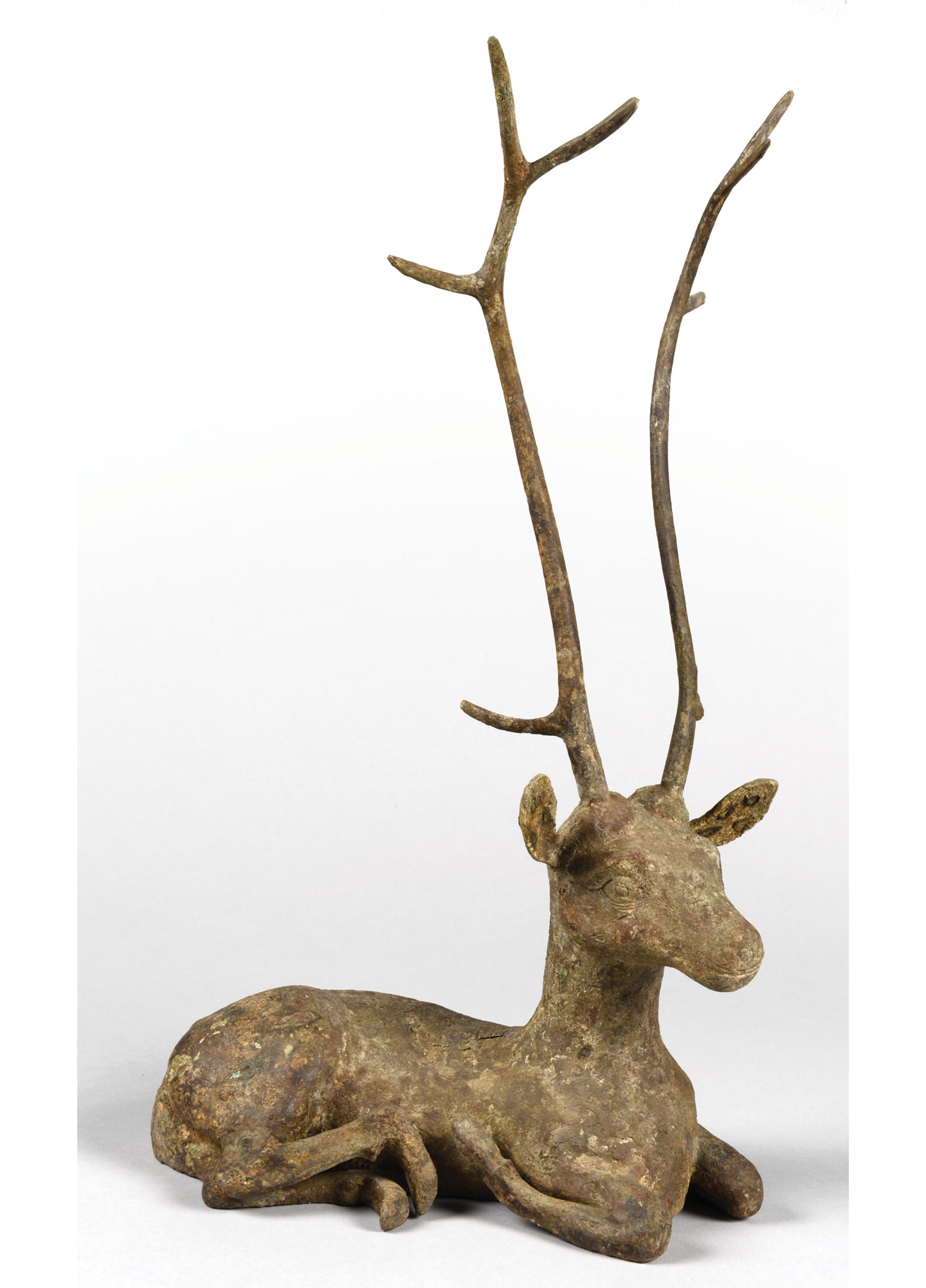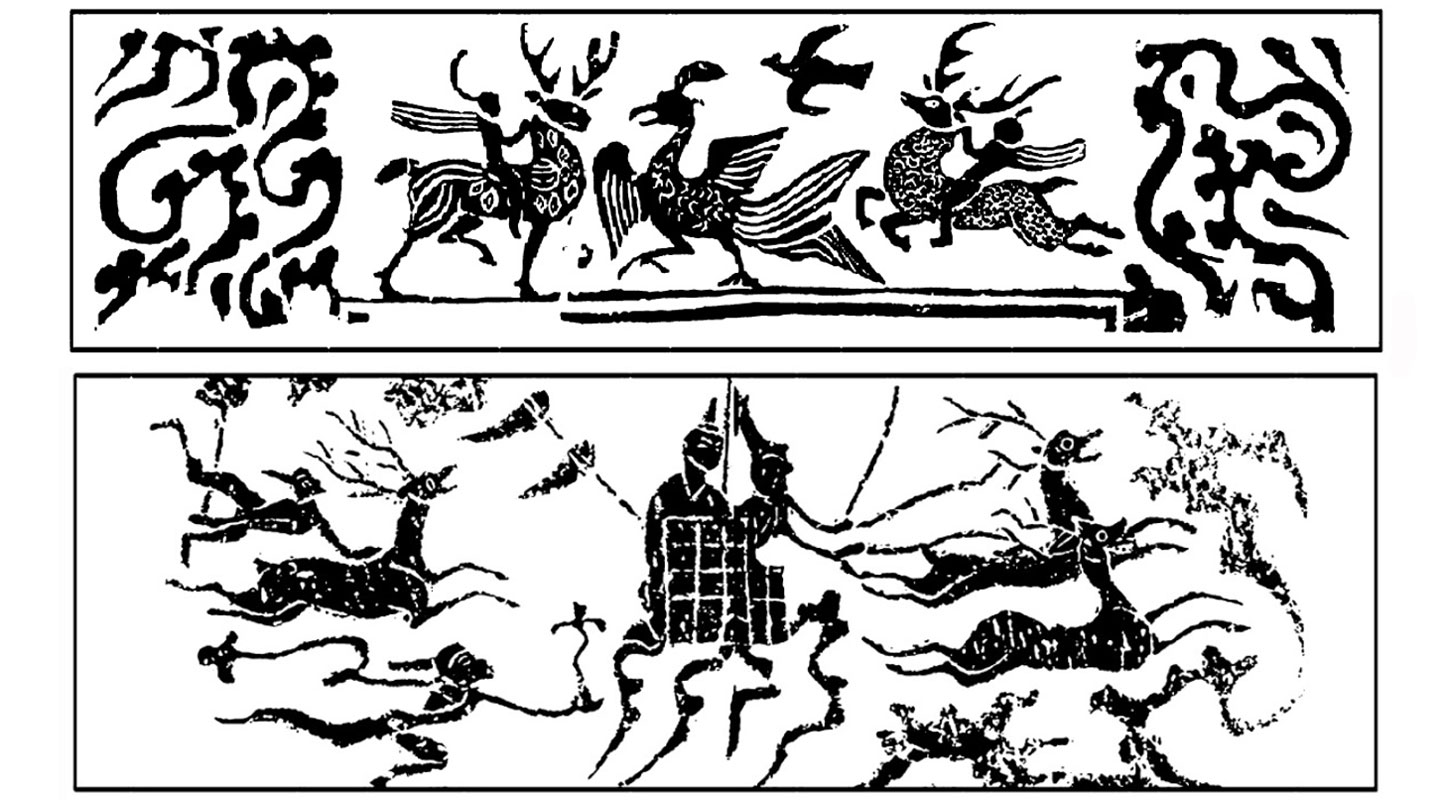Dear readers, With the launch of e-newsletter CUHK in Focus, CUHKUPDates has retired and this site will no longer be updated. To stay abreast of the University’s latest news, please go to https://focus.cuhk.edu.hk. Thank you.
The Deer Call

With sounds of happiness the deer
Browse on the celery of the meads.
A nobler feast is furnished here,
With guests renowned for noble deeds.
The lutes are struck; the organ blows,
…
And with my spirits rich crown all,
The cups to cheer the festive throng.
The poem Lu Ming, from The Book of Songs, portrays a picture of harmony between humanity and nature. A herd of deer foraging in the meadow ‘call their companions upon the discovery of delectable food’. The call is comparable to the hospitality of a host who entertains his guests with fine wine and music.
The beauty and tranquility of the deer must have touched the hearts of the ancients. From as early as the late Shang dynasty, the Chinese were using jade from Khotan to carve deer accessories. One of the few who owned jade accessories back then was the wife of Emperor Wu of the Shang kingdom, Lady Fu Hao, who also served as the high priestess and general of the army. A common feature of the jade deer artefacts dating back to the Western Zhou dynasty is their elongated antlers. And it is worth mentioning that the logo of the Fine Arts Department of CUHK is inspired by the antlers of the Western Zhou jade deer.
The ancient Chinese considered the elegant and agile deer as perfect mounts for fairies, evidence of which abounds in literary works dating back to the Han and Tang dynasties. Below are some examples:
Floating on the cloud and mist,
We enter the dim height of heaven;
Riding on the white deer
We sport and take our pleasure
From Zhuang Ji’s Songs of the South,
Western Han dynasty
The immortal rides a white deer,
His hair is short and ears so long.
He leads me up the grand Mount Hua,
I pluck the magic mushroom, obtain a crimson
Insignia streamer.
Anonymous, Long Song Ballad,
Han dynasty
On two white deer astride,
Holding the lingzhi fungus of immortality.
Li Bai, Tang dynasty
The carefree spirit expressed in the verses above is truly fascinating. Deer are regarded as a symbol of longevity because of their association with mythology. The Taoist classic Baopuzi reads: ‘Tigers, deer, and rabbits live a thousand years.’ Starting from the Song dynasty or earlier, deer have been a symbol of longevity in artwork. In Chinese mythology, deer are auspicious, gentle-natured animals, and their sightings are often thought to foretell the emergence of a just ruler. Such a belief is reflected in An Account on the Illustrations of Auspicious Omens, written by Sun Roushi in the sixth century A.D., which says: ‘A deer is the best of pure virtue, which radiates five different colours. If the ruler is pious, it appears. If the ruler follows the law of the ancient sages meticulously, the white deer appears.’
The exhibition ‘From the Realm of the Immortals: Meanings and Representations of the Deer from the Nanjing Museum’, organized by the Art Museum of CUHK, features a bronze deer unearthed in a Han tomb. The recumbent deer with elongated antlers emanates meekness and composure, as well as alertness. To be able to present its posture and countenance with such life-like accuracy is a rare feat. The incisions on the deer’s back, haunch, neck, and ears were inlaid with turquoise gemstones, which outlined the contours of the deer’s body. Turquoise breaks easily, and therefore processing the gemstone into such thin and evenly-sized flakes would have required excellent craftsmanship. The flakes have long come off, but some two thousand years ago, the deer, whose surface is patinated, must have captured the imagination of the master of the tomb with its glittering splendour and turquoise décor, which is probably why it was laid in the tomb to accompany the deceased in his journey into the afterlife.

This article was originally published in No. 498, Newsletter in May 2017.